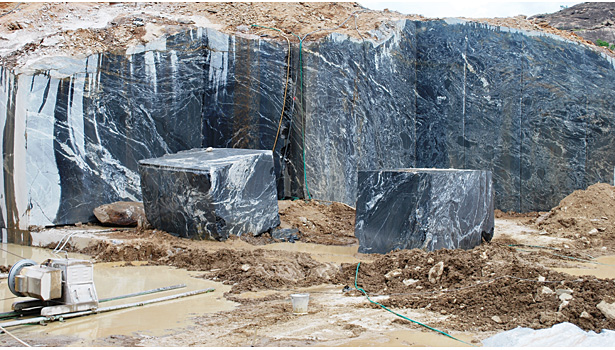Checking Out Granite Quarries in South Africa Industry: From Quarry to Work of art
Checking Out Granite Quarries in South Africa Industry: From Quarry to Work of art
Blog Article
Revealing the Mysteries of Granite Quarrying: Where Strength and Sophistication Meet
The globe of granite quarrying is a world where the raw stamina of nature assembles with human creativity to produce frameworks that stand the examination of time with an air of elegance. From the midsts of quarries to the careful sprucing up in workshops, the procedure of changing granite right into building marvels is a complicated dancing of tradition and development. As we peer into the midsts of this ancient craft, we begin to uncover the covert complexities that form the very significance of our developed atmosphere.
The Beginnings of Granite Quarrying
In the record of architectural history, the origins of granite quarrying are shrouded in a tapestry of old craftsmanship and geological marvels. Going back to old Egypt and Mesopotamia, the removal of granite from quarries marked the beginning of a journey that would ultimately result in the development of several of the world's most renowned structures.
Granite quarrying's roots can be traced to the knowledgeable artisans who identified the stone's sturdiness and visual allure. Through a mix of primitive devices and sheer decision, these early quarry employees uncovered granite blocks that would end up being the structure blocks of people.
As civilizations developed, so did the techniques of quarrying granite. The Romans, renowned for their design prowess, established advanced methods for removing granite to construct monoliths, temples, and roadways that stood the examination of time.
The tradition of these ancient quarrying techniques continues to shape contemporary style, with granite remaining an icon of toughness and beauty in construction jobs around the globe. (granite quarries in south africa)
Devices of the Quarrying Trade
The advancement of granite quarrying methods from old civilizations to modern times highlights the vital duty played by the devices of the quarrying sell shaping the sector's techniques. In ancient times, quarrying tools were fundamental, frequently consisting of blades, hammers, and wedges made from materials like bronze or iron. These devices needed substantial workforce and time to extract granite blocks from quarries.

In addition, the introduction of pneumatically-driven tools and high-powered equipment has dramatically reduced the physical labor required in quarrying procedures, boosting employee security and performance. As the quarrying market remains to introduce, the devices of the trade stay at the forefront of driving progression and forming the future of granite extraction.
Removing Blocks of Granite
Utilizing precision equipment and advanced methods, the removal of granite blocks from quarries has become an innovative procedure in the contemporary quarrying industry. Managed blowing up methods are then utilized to damage apart the granite into workable sections.

Sprucing Up and Completing Methods
To attain a perfect surface area on granite blocks, experienced craftsmens employ a collection of thorough polishing and completing techniques. After the preliminary removal and forming processes, the granite blocks go through a thorough sprucing up phase to boost their natural elegance and toughness. One usual method made use of in polishing granite is ruby abrasion, where industrial rubies are used to grind and brighten the rock to a smooth finish. This process not just produces a glossy surface area but also guarantees uniformity in shade and texture across the granite block.
In addition to sprucing up, finishing techniques are applied to more improve the granite's look. These techniques may include flaming, refining, or cleaning, each offering one-of-a-kind structures and coatings to fit different visual preferences. Flaming, for instance, involves exposing the granite surface area to heats to develop a rough, distinctive finish, suitable for outdoor applications where slip-resistance is vital. Sharpening, on the various other hand, provides a matte surface that is smooth to the touch, excellent for interior countertops and flooring. By thoroughly selecting and Bonuses using these polishing and finishing strategies, artisans can change raw granite obstructs into charming pieces that showcase both toughness and style.

Ecological Impact and Sustainability
With the expanding emphasis on ecological consciousness in the industry, granite quarrying methods are progressively inspected for their influence on natural sources and long-term sustainability. In addition, the transport of granite from quarries to processing centers creates carbon exhausts, additionally contributing to ecological destruction.
To reduce these influences and make sure sustainability in granite quarrying, sector stakeholders are taking on various procedures. Carrying out sophisticated technologies to minimize power usage and water usage, reclaiming quarried land for environmental repair, and promoting liable sourcing techniques are some strategies being utilized. Certifications such as the Forest Stewardship Council (FSC) and the Leadership in Energy and Environmental Style (LEED) click here to read assistance consumers recognize environmentally friendly granite products.
Final Thought
Finally, granite quarrying is a procedure that requires specialized tools and methods to essence blocks of granite and polish them to a high level of surface. While the environmental effect of quarrying can be significant, initiatives are being made to boost sustainability techniques in the sector. On the whole, granite quarrying is a fragile balance in between utilizing the stamina and sophistication of this natural stone while decreasing its effect on the atmosphere.
Report this page